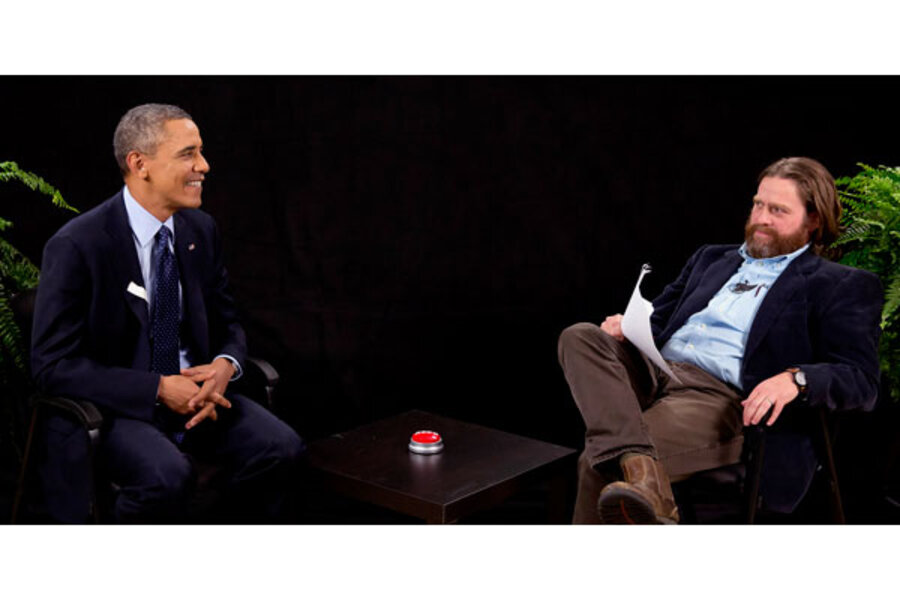Mission accomplished? ‘Funny or Die’ gives Obamacare traffic boost.
Loading...
| Washington
President Obama, fresh off the release of his appearance on the comedy site FunnyorDie.com, tweeted thanks Tuesday to host Zach Galifianakis for driving traffic to HealthCare.gov.
“Funny or Die” was the highest source of individual traffic referrals to the federal health insurance marketplace Tuesday, with some 32,000 people clicking through from “Funny or Die” to HealthCare.gov by 6 p.m., a White House official said. By 8 p.m. Tuesday, the video had nearly 8 million views.
“Hey @galifianakisz, thanks for sending so many folks to #GetCoveredNow at Healthcare.gov. And good luck with those spider bites. – bo,” Mr. Obama tweeted. The “– bo” signoff stands for Barack Obama, and means that the president himself wrote the tweet.
As for the reference to spider bites... well, just watch the video.
Obama’s outreach to young people has been central to his last-minute push for enrollment in health insurance as the clock ticks down to March 31, the last day to enroll in coverage for 2014 or face a penalty.
Between Oct. 1, 2013, and Feb. 28, more than 4.2 million Americans enrolled in health insurance via state and federal exchanges, the Obama administration announced Tuesday. In February alone, some 943,000 people enrolled via the exchanges, down from the 1.14 million people who signed up in January. An official explained that part of the decline was because February is a short month, and because January’s figure included some days at the end of December.
Last September, the Department of Health and Human Services (HHS) projected that 7 million people would enroll by March 31. That projection was later reduced to 6 million after the botched rollout of HealthCare.gov and some state exchanges. On a conference call with reporters Tuesday, HHS officials would only say that they’re “confident” millions more Americans would continue to enroll before the deadline, but not that they would reach the goal of 6 million.
Still, more important than the overall numbers is the percentage of enrollees who are “young adults” – defined by HHS as age 18 to 34. In the first three months, only 24 percent of signups were in that age group, well below the 38.5 percent the administration had forecast last September. In both January and February, youth enrollment ticked upward to 27 percent. Overall, youth enrollment for the first five months was 25 percent. Young enrollees, who tend to be healthier, are needed to offset the costs of insuring older, typically less healthy people.
HHS Secretary Kathleen Sebelius expressed confidence that youth signups would continue to rise as a percentage of the total.
“We learned from Massachusetts’ experience that young adults tend to sign up later in the process,” Secretary Sebelius said, referring to the implementation of that state’s 2006 law, which included an individual mandate to buy insurance.
If youth enrollment falls short as a percentage of overall signups, HHS officials are confident that risk-mitigation measures contained in the Affordable Care Act will prevent premiums from spiking next year.
“The risk corridor plus the reinsurance program and the risk adjustment program together will all have a very significant mitigating effect in keeping premiums low for 2015,” said Gary Cohen, a top HHS official in charge of Obamacare implementation.
Under “risk corridors,” insurers that take in more in premiums than they need to pay claims will give some excess to the government, and vice versa with government helping insurers if they take in less than they need. The “reinsurance” fund, paid for by a tax on every health plan, will help insurers pay expensive claims. Under “risk adjustment,” HHS redistributes funds from plans with healthier enrollees to those with less-healthy enrollees.
The first two programs are temporary, running through 2016, while the risk adjustment program is permanent.






